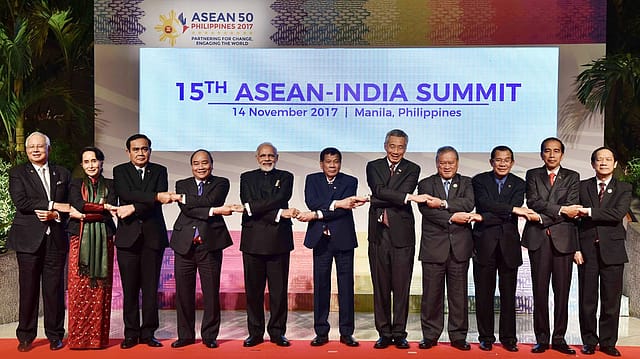Beyond the pageantry
ADVERTISEMENT

THE REPUBLIC DAY parade is generally seen as an exhibition of the country’s might, showcasing all the military technology and power at its disposal. But there’s also a sophisticated diplomatic exercise that happens largely behind the scenes every year in the invitation of a global leader as chief guest. This year, that exercise has assumed the epic proportions of the parade itself, with the government inviting not one but 10 heads of state to attend.
The heads of the 10 countries that form the Asean bloc (Brunei,Cambodia,Laos, Malaysia, Thailand,Singapore, Vietnam,Philippines,Indonesia and Myanmar) have been invited to New Delhi to participate in the Republic Day celebrations as well as attend a Commemorative Asean summit. In the rarefied world of global diplomacy, this is a significant move that demonstrates India’s commitment to its ‘Act East’ policy.
Experts argue more needs to be done. Shankari Sundararaman, professor at Jawaharlal Nehru University’s School of International Studies, says “the level of economic integration [between India and Asean ] remains below par.” She adds that the region shares cultural and civilisational links, but “critical to India- Asean integration will be the push towards ensuring greater connectivity with the region.” Many strategic and economically important projects like the Trilateral Highway are still not complete.
December 2025
The annual Fortune 500 India list, the definitive compendium of corporate performance, is out. This year, the cumulative revenue of the Fortune 500 India companies has breached $2 trillion for the first time. Plus, find out which are the Best B-schools in India.
It’s important for India to improve trade ties with the region; the Asean bloc has become India’s fourth largest trading partner with trade value of more than $65 billion. According to data available with the United Nations Conference on Trade and Development, some 22% of India’s outward foreign direct investment in 2015 was to Asean countries. Equally important, Asean -based companies have invested $45 billion in cumulative FDI equity capital in India during 2010–15, all of which seems to show a growing convergence between two economic powerhouses.
Apart from the trade significance, asserting its importance in the region is important to India, seeing that China has emerged as the largest trading partner with the Asean bloc. The central question for India and the large part of its engagement with the Asean member states in the current scenario is also a function of what is happening geopolitically in the region, and China remains a big factor. The Indo-Pacific region has been in a state of flux over the last few years with China asserting its global dominance through proposed Maritime Silk route and claims in the South China Sea. According to a report from Assocham, China’s share in Asean trade increased from 4.3% in 2000 to 14% in 2013, while that of the U.S. has fallen from 16% to 8%.
Even as the U.S. sees its economic importance in the area wane, India hopes it can fill that gap. But there seem to be many roadblocks, including the delay in finalising the RCEP or the Regional Comprehensive Economic Partnership, a major free trade agreement between 16 countries, of which Asean forms the major chunk. “It is increasingly being realised by the states that they cannot rely on America in perpetuity to solve their economic or geopolitical problems,” says Harsh V. Pant, Distinguished fellow and head of the strategic studies programme at the Observer Research Foundation, a leading think-tank.
India is not very enthusiastic about the RCEP in its current form, as it may be forced to remove some protectionist tariffs. There are also fears that with RCEP in place, Chinese manufacturing will be unchallenged and could swamp the region. Pant says that a regional economic framework which is not inclusive will not work. He adds that unless the major economic powers figure out among themselves what sought of economic vision they have for the region, it is not very likely that there would be any resolution to this problem.
Sundararaman, meanwhile, seems optimistic. “I think the Commemorative Summit is a significant step in reiterating and consolidating the importance of Asean in India's foreign policy at a time when there have been discussions on the centrality of Asean.”
But with no RCEP agreement in near sight on the one hand, and an assertive China on the other, it will be interesting to see if inviting the Asean heads to the annual parade will translate into something beyond the usual spectacle.
